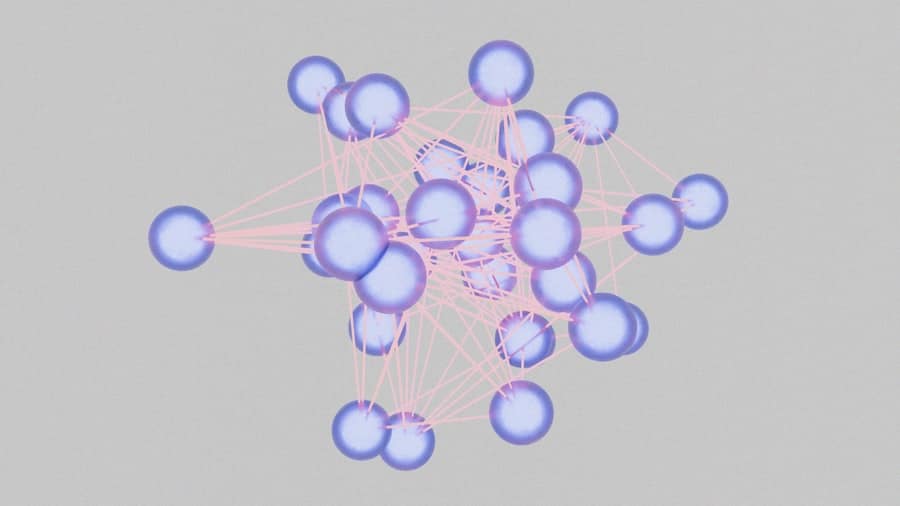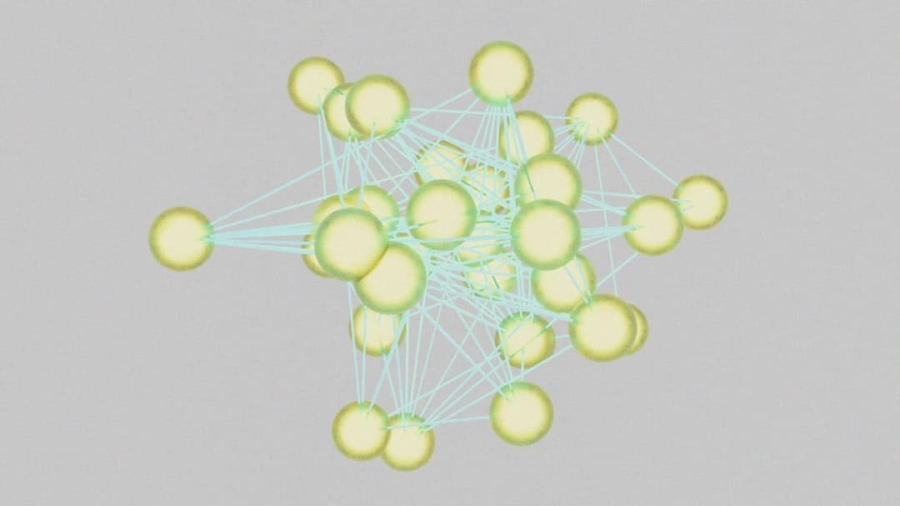In an era where digital transformation is accelerating at an unprecedented pace, the need for robust cybersecurity measures has never been more critical. Organizations are increasingly reliant on interconnected systems, cloud services, and remote workforces, which have expanded the attack surface for cyber threats. As a response to this evolving landscape, cybersecurity professionals are turning to innovative frameworks that can provide a more resilient defense against sophisticated attacks.
One such framework gaining traction is the concept of a cybersecurity mesh. This approach emphasizes a decentralized security architecture that allows organizations to protect their assets more effectively, regardless of their location. The cybersecurity mesh is not merely a buzzword; it represents a paradigm shift in how organizations conceptualize and implement their security strategies.
By enabling a more flexible and adaptive security posture, the mesh architecture allows for the integration of various security tools and protocols across disparate environments. This is particularly important as organizations grapple with the complexities of hybrid cloud environments, IoT devices, and remote work scenarios. The cybersecurity mesh framework aims to create a cohesive security strategy that can respond dynamically to threats while ensuring that security measures are applied uniformly across all endpoints.
Key Takeaways
- Cybersecurity Mesh is a new approach to network defense that aims to address the limitations of traditional perimeter-based security.
- Distributed Network Defense involves spreading security controls across the network to provide multiple layers of protection.
- Traditional Network Defense faces challenges such as reliance on perimeter security, limited visibility, and difficulty in securing remote and cloud-based resources.
- Cybersecurity Mesh is a decentralized, flexible, and adaptive security model that enables the protection of any asset, anywhere.
- Cybersecurity Mesh improves distributed network defense by providing security controls that are distributed, adaptive, and context-aware.
Understanding Distributed Network Defense
Decentralized Security Measures
This approach involves deploying security measures at various points throughout the network, ensuring that each segment is fortified against potential attacks.
Defense in Depth
One of the key principles of distributed network defense is the concept of “defense in depth.” This strategy involves layering multiple security measures to create a comprehensive protective barrier. For instance, an organization might implement firewalls, intrusion detection systems, and endpoint protection solutions across its network.
Enhanced Visibility and Real-time Response
Each layer serves as an additional safeguard, making it more difficult for attackers to penetrate the organization’s defenses. Furthermore, distributed network defense allows for greater visibility into network activity, enabling security teams to detect and respond to threats in real-time.
Challenges in Traditional Network Defense

Traditional network defense models often rely on a perimeter-based approach, where security measures are concentrated at the network’s edge. While this model was effective in the past, it has become increasingly inadequate in the face of modern cyber threats. One significant challenge is the rise of remote work and cloud computing, which have blurred the lines of the traditional network perimeter.
Employees accessing corporate resources from various locations and devices create vulnerabilities that perimeter-based defenses struggle to address. Moreover, traditional models often lead to a false sense of security. Organizations may invest heavily in perimeter defenses, believing they are adequately protected while neglecting internal threats or vulnerabilities within their networks.
This oversight can be catastrophic, as attackers often exploit weaknesses within the network rather than attempting to breach the perimeter directly. Additionally, traditional security solutions can be cumbersome and slow to adapt to new threats, leaving organizations exposed to rapidly evolving attack vectors.
What is Cybersecurity Mesh?
Cybersecurity mesh is an architectural approach that redefines how organizations implement their security strategies by promoting a decentralized and interconnected framework. At its core, the cybersecurity mesh enables organizations to create a flexible security posture that adapts to the dynamic nature of modern IT environments. This approach allows for the integration of various security tools and technologies across different locations and platforms, ensuring that security measures are consistently applied regardless of where assets reside.
The concept of cybersecurity mesh emphasizes identity-centric security, where user identities and access controls are central to the security framework. By focusing on identity rather than solely on network perimeters, organizations can better manage access to sensitive data and resources. This shift is particularly important in today’s landscape, where employees often work remotely and access corporate resources from various devices.
The cybersecurity mesh also facilitates real-time threat detection and response by enabling organizations to share threat intelligence across their networks, enhancing overall situational awareness.
How Cybersecurity Mesh Improves Distributed Network Defense
The implementation of a cybersecurity mesh significantly enhances distributed network defense by providing a more cohesive and integrated approach to security management. One of the primary advantages of this framework is its ability to unify disparate security tools and technologies into a single cohesive system. This integration allows organizations to streamline their security operations, reducing complexity and improving efficiency in threat detection and response.
Furthermore, the cybersecurity mesh architecture promotes greater visibility across the entire network. By leveraging advanced analytics and machine learning algorithms, organizations can gain insights into user behavior and network activity in real-time. This enhanced visibility enables security teams to identify anomalies and potential threats more quickly, allowing for faster incident response times.
Additionally, the decentralized nature of the mesh architecture means that even if one segment of the network is compromised, other areas can remain secure, thereby minimizing the impact of an attack.
Key Benefits of Cybersecurity Mesh

Improved Scalability
One of the most notable advantages is improved scalability. As organizations grow and evolve, their security needs change as well. The cybersecurity mesh allows for easy integration of new tools and technologies without disrupting existing systems. This flexibility ensures that organizations can adapt their security strategies in response to emerging threats or changes in their operational environment.
Enhanced Collaboration
Another critical benefit is enhanced collaboration among security teams. The cybersecurity mesh fosters an environment where information sharing is encouraged, allowing teams to collaborate more effectively in identifying and mitigating threats. By breaking down silos between different departments or teams, organizations can create a more unified approach to cybersecurity that leverages collective expertise and resources.
Unified Threat Detection and Incident Response
This collaborative mindset not only improves threat detection but also enhances incident response capabilities.
Implementing Cybersecurity Mesh in Your Organization
Implementing a cybersecurity mesh within an organization requires careful planning and execution. The first step involves conducting a thorough assessment of existing security measures and identifying gaps or vulnerabilities within the current framework. This assessment should include an evaluation of all assets, including cloud services, on-premises systems, and remote devices used by employees.
Once vulnerabilities have been identified, organizations should prioritize their security initiatives based on risk levels and potential impact. Developing a roadmap for implementation is crucial; this roadmap should outline specific goals, timelines, and resource requirements for integrating the cybersecurity mesh into existing operations. Training staff on new tools and processes is also essential to ensure that everyone understands their roles in maintaining a secure environment.
Future Trends in Cybersecurity Mesh
As cyber threats continue to evolve, so too will the strategies employed by organizations to combat them. The future of cybersecurity mesh is likely to be shaped by several emerging trends. One such trend is the increasing reliance on artificial intelligence (AI) and machine learning (ML) technologies for threat detection and response.
These technologies can analyze vast amounts of data in real-time, enabling organizations to identify patterns indicative of potential attacks more quickly than traditional methods.
Zero trust principles advocate for continuous verification of user identities and access rights, regardless of whether users are inside or outside the corporate network perimeter.
This approach aligns well with the decentralized nature of cybersecurity mesh, further enhancing its effectiveness in protecting against modern threats. Additionally, as regulatory requirements around data protection become more stringent globally, organizations will need to ensure that their cybersecurity mesh frameworks comply with these regulations.
In summary, as organizations navigate an increasingly complex digital landscape filled with evolving cyber threats, adopting a cybersecurity mesh framework will be essential for enhancing their overall security posture. By embracing this innovative approach, organizations can better protect their assets while remaining agile enough to respond effectively to emerging challenges in cybersecurity.
If you are interested in improving your workflow and increasing accuracy in tax preparation, you may want to check out the article Best Software for Tax Preparers: Streamline Your Workflow and Increase Accuracy. This article provides valuable insights into the best software tools available for tax preparers to streamline their processes and ensure greater accuracy in their work. Just like how cybersecurity mesh enhances distributed network defense, using the right software can greatly improve efficiency and effectiveness in tax preparation.
FAQs
What is cybersecurity mesh?
Cybersecurity mesh is a distributed security model that aims to provide security to digital assets, people, devices, and services, regardless of their location.
How does cybersecurity mesh improve distributed network defense?
Cybersecurity mesh improves distributed network defense by allowing security to be delivered to individual devices and services, rather than relying on a centralized security perimeter. This approach helps to protect against threats that may bypass traditional security measures.
What are the benefits of cybersecurity mesh?
Some benefits of cybersecurity mesh include improved flexibility, scalability, and resilience in defending against cyber threats. It also allows for more effective protection of distributed networks and devices.
How does cybersecurity mesh impact the overall security posture of an organization?
Cybersecurity mesh can enhance the overall security posture of an organization by providing a more comprehensive and adaptable approach to defending against cyber threats. It can also help to address the challenges posed by the increasing complexity and diversity of digital environments.
What are some key considerations for implementing cybersecurity mesh?
Key considerations for implementing cybersecurity mesh include ensuring interoperability with existing security infrastructure, addressing potential performance impacts, and managing the complexity of a distributed security model. Organizations should also consider the potential impact on their security operations and processes.

